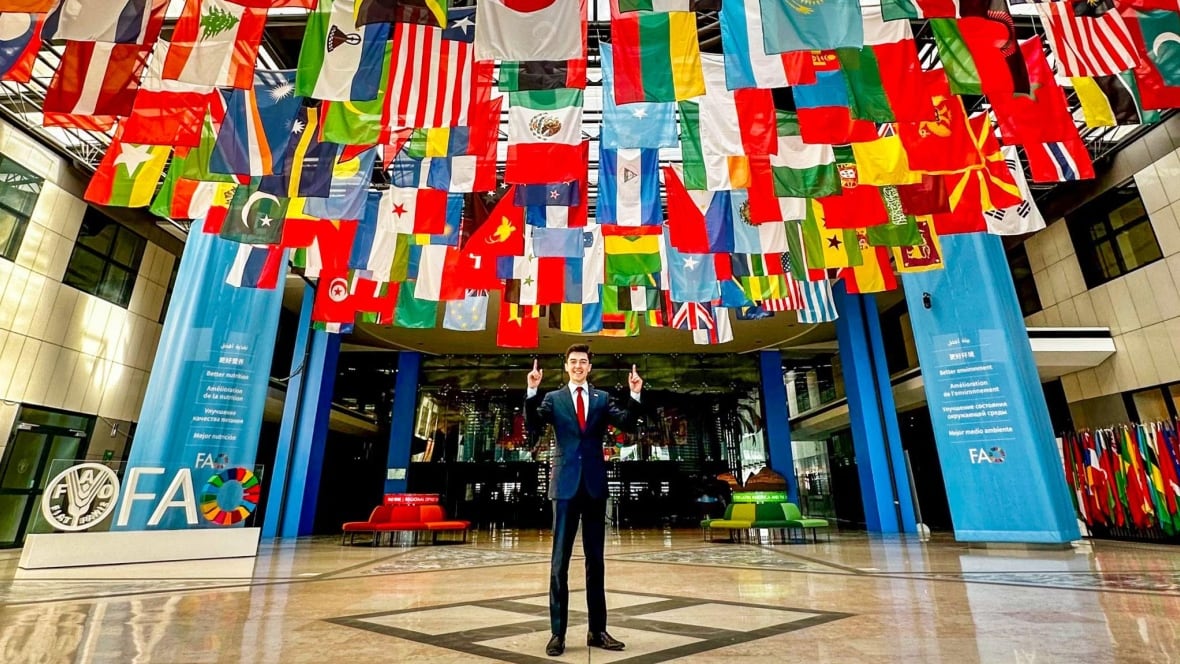Lifestyle
Exploring Flags: Personal Stories and National Identity

Flags have long been symbols of national identity and personal connection. For many, including Michael Lecchino from Montreal, flags represent rich stories and cherished memories. From a young age, Lecchino developed a passion for vexillology, the study of flags, captivated by their colors, shapes, and the narratives they convey.
Lecchino’s journey began at age three when he first flipped through a sticker book of national flags. Each design became a puzzle to solve: the subtle differences between the flags of Luxembourg and the Netherlands or the unique symbols of Slovenia and Slovakia. Every morning, he is greeted by the sight of a Canadian flag flying from a municipal pole across the street, a constant reminder of his national identity. As a child, he learned that when the flag was at half-mast, it indicated that someone had passed away, informing him of the community’s losses.
Flags as Symbols of Connection
Lecchino’s understanding of flags deepened during his travels. In May 2022, he represented Canada at the G7 Youth Summit in Berlin. A memorable moment occurred at the Canadian Embassy, where he admired a pin featuring the Canadian and German flags worn by diplomat Robert Fry. Fry generously offered Lecchino the pin, a gesture that underscored the weight of representing Canada abroad. “To wear that pin was to represent Canada, and with it, the values I hoped we projected abroad: respect, openness, humility, curiosity,” Lecchino reflected.
The Canadian flag, while a source of pride, also carries complexities. It has been used in various contexts, from protests to moments of mourning. Lecchino embraces the flag as a symbol of unity and a promise to listen to diverse perspectives. He draws upon a poignant quote from designer Roman Mars, who stated, “There’s just something about them that works on our emotions.” This emotional connection speaks to the power of flags to evoke feelings of belonging and identity.
The Evolution of Canada’s Flag
The history of Canada’s flag is as captivating as its design. Introduced in 1965, it emerged from a period of intense debate about national identity. Prior to its adoption, Canadians had flown the Union Jack and the Canadian Red Ensign. The need for a distinct symbol became evident during the Suez Crisis when Canadian forces were confused for British troops. The final design, an 11-pointed red maple leaf flanked by red bars, was chosen from thousands of submissions. Today, it is considered one of the best-designed national flags globally, with Mars describing it as “the gold standard.”
Lecchino appreciates that Canada did not simply inherit its flag; rather, it was a collective effort to forge a new identity. This sentiment resonates deeply with him, reinforcing the idea that identity is shaped through shared experiences and choices.
Flags also weave personal narratives. Lecchino recalls how a conversation with an Albanian friend revealed the significance of a flag. She shared that her Italian Canadian husband knew the Albanian flag, a moment that influenced their relationship. Such connections demonstrate that flags can transcend mere symbols; they can spark conversations and foster relationships.
In his travels as a youth delegate, Lecchino collects friendship flag pins, each symbolizing a connection forged between places. He stores these pins in a felt display book, a tangible reminder of his journeys. Before every trip, he packs a small pouch with a red maple leaf pin, a piece of identity he carries with him.
In a world where flags can signify both division and unity, Lecchino finds beauty in their ability to tell stories. Flags represent not just nations but the individuals who carry them, encapsulating memories and connections. As he observes, a flag can indicate loss, identity, and the places one has been.
Whether it is through the colors of a national flag or the stories of immigrants, flags resonate deeply with human experiences. They serve as reminders of where we come from, who we are, and the connections we share. In Lecchino’s view, each flag tells a story—one that is often meaningful and personal.
-

 Science3 months ago
Science3 months agoToyoake City Proposes Daily Two-Hour Smartphone Use Limit
-

 Top Stories3 months ago
Top Stories3 months agoPedestrian Fatally Injured in Esquimalt Collision on August 14
-

 Health3 months ago
Health3 months agoB.C. Review Reveals Urgent Need for Rare-Disease Drug Reforms
-

 Technology3 months ago
Technology3 months agoDark Adventure Game “Bye Sweet Carole” Set for October Release
-

 World3 months ago
World3 months agoJimmy Lai’s Defense Challenges Charges Under National Security Law
-

 Lifestyle3 months ago
Lifestyle3 months agoVictoria’s Pop-Up Shop Shines Light on B.C.’s Wolf Cull
-

 Technology3 months ago
Technology3 months agoKonami Revives Iconic Metal Gear Solid Delta Ahead of Release
-

 Technology3 months ago
Technology3 months agoApple Expands Self-Service Repair Program to Canada
-

 Technology3 months ago
Technology3 months agoSnapmaker U1 Color 3D Printer Redefines Speed and Sustainability
-

 Technology3 months ago
Technology3 months agoAION Folding Knife: Redefining EDC Design with Premium Materials
-

 Business3 months ago
Business3 months agoGordon Murray Automotive Unveils S1 LM and Le Mans GTR at Monterey
-

 Technology3 months ago
Technology3 months agoSolve Today’s Wordle Challenge: Hints and Answer for August 19









